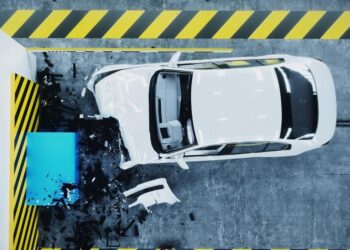There is a lot of controversy concerning the treatment of minors following an auto collision injury. Insurance companies hold a strong position that minors don’t need medical care simply because they can’t communicate the injuries properly.
Common symptoms such as headaches, neck pain and low back pain, are often overlooked after an auto accident, simply because the child does not complain or because an infant or toddler is unable to communicate their symptoms to parents. Depending on the passenger seat position and the mechanism of impact, symptoms such as irritability, lethargy, poor appetite and crying, may often be the only evidence that an infant has suffered injuries. In older children approaching adolescence, symptoms may include fatigue, headache, neck pain or restricted range-of-motion. Adult patients, and those with pre-existing conditions (which I will discuss in my next column), start their treatments immediately after the accident.
It is not uncommon for headache symptoms to occur many months after an accident. In such cases, the patient will frequently report having only minor neck soreness for a couple of days following the accident. Take for example, 12-year-old Becky sitting next to her mother at a red light, when suddenly their car is rear-ended by another vehicle driving 30 mph. The force of the impact caused whiplash-like injury to their necks. Both were immediately taken to the hospital where a CT of Becky’s head was taken to rule out concussive symptoms. CT scan was negative and Becky was released from care with a prescription for baby Tylenol. Two years later, Becky complains of neck pain and doesn’t know the cause. During spinal evaluation, Becky’s subjective and objective findings began looking like the culprit of the whiplash injury she sustained two years before. The only evidence needed was a MRI of the cervical sspine; it came back positive for the two disc bulges at C5-C4 and C5- C6. Fortunately, her mom had just finished treatment, so the PIP benefits were available for Becky. Working with their personal injury attorney, they were able to recover an appropriate settlement.
In the above example, the muscles and surrounding ligaments of the neck caused alteration of the normal spinal curves, resulting in rapid spinal degeneration. The necessity for a detailed and thorough spinal examination of all children involved in auto accidents, is well documented in the pediatric literature. Following is some information from the National Highway Traffic Safety Administration’s study, “Children Injured in Motor Vehicle Traffic Crashes,” which helps us as professionals understand the effects of auto injuries on minors and how to efficiently manage them.
Not surprising, the study found that children involved in rollover crashes sustained the highest incidence of incapacitating injuries. Among unrestrained children, these injuries were almost three times higher. Eight times more likely, for unrestrained children in a near-side impact.
Cerebrum injuries (contusions or lacerations) were the most common type of head injuries among all children included in the analysis. Concussion and unconsciousness were more common among children under the age of one.
Based on the results of this study, brain injuries in children can be worse than similar injuries sustained by adults. For example, children who suffer traumatic brain injuries can experience lasting or late-appearing neuropsychological problems, highlighting the need for careful monitoring of children as they grow older.
According to this study, “In children, some neurological deficits after head trauma may not manifest for many years. Frontal lobe functions, for example, develop relatively late in a child’s growth, so that injury to the frontal lobes may not become apparent until the child reaches adolescence when higher level reasoning develops.”
Since the frontal lobes control social interactions and interpersonal skills, early childhood brain damage may not manifest until such frontal lobe skills are called into play later in development. Likewise, injury to reading and writing centers in the brain may not become apparent until the child reaches school age and shows signs of delayed reading and writing skills. A recommended referral to a psychologist is warranted to rule out any lack of development in the child’s skill.
We as professionals, have many of these particular cases go through our management systems and will provide legal and medical attention warranted on a case-by-case basis. As we now understand, injuries in children do not resolve on their own and will boomerang back to a personal injury lawyer or the doctor’s office. The challenge of an appropriate response deserves attention and applying all that we know to provide the highest maximum settlement and the medical help necessary. A collaborative response with personal injury attorneys in managing these common auto injury cases, has engendered a positive public trust and parents now can secure the financial interest of their kids following injuries sustained in crashes without fearing the consequences. Dr. Alan Khiger









